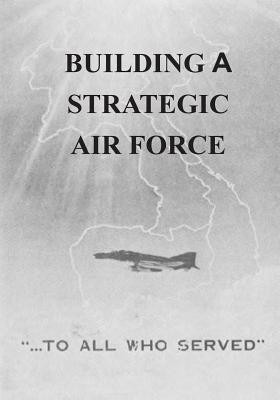
- We will send in 10–14 business days.
- Author: U S Air Force
- Publisher: CreateSpace Independent Publishing Platform
- Year: 2015
- Pages: 538
- ISBN-10: 1507787804
- ISBN-13: 9781507787809
- Format: 17.8 x 25.4 x 2.8 cm, softcover
- Language: English
- SAVE -10% with code: EXTRA
Reviews
Description
From 1946 to 1991 the Strategic Air Command (SAC) operated the intercontinental and nuclear strike forces of the United States Air Force. During much of this period SAC was the premier operational command of the service. The rising tensions of the Cold War with Soviet-directed world communism gave the command a crucial role as the main force deterring potential aggression against the United States and itsallies. Even after the emergence of airborne strategic nuclear forces in the late 1950s, SAC's status as an Air Force major command and the Joint Chiefs of Staff specified command gave it the pivotal role in national strategy.This volume deals with the early years of the Air Force's effort to build and maintain a strategic striking force, from 1945 through 1953. Itdiscusses the period of reorganization in national defense in the years after the end of the Second World War, as the Army Air Forces dealt withquestions of structure, doctrine, strategy, atomic weapons, and technology. Crucial decisions were made at the end of 1947 and the beginning of 1948, but fiscal austerity limited the new United States Air Force in implementing those decisions. Despite this, General Curtis E. LeMay, the SACCommander, found means and developed methods to ensure a high state of combat readiness. The war in Korea triggered an expansion of the armed forces-including SAC-that culminated in the "New Look" of the Eisenhower administration. The New Look emphasized nuclear air power as the foundation of a national strategy of containment and deterrence.Walton S. Moody's analytical work discusses the challenges facing Air Force leaders in this time of stringent budgets, interservice disputes, andtechnological change. In particular, it examines the role of that leadership in fostering the development of an effective war-ready yet peace-keeping organization. The issues it raises are still relevant today, in a time when the distinction between strategic and tactical air power is less clear-cut, and when the armed services of the United States are redefining roles for themselves in the Post-Cold War era.
EXTRA 10 % discount with code: EXTRA
The promotion ends in 17d.11:31:30
The discount code is valid when purchasing from 10 €. Discounts do not stack.
- Author: U S Air Force
- Publisher: CreateSpace Independent Publishing Platform
- Year: 2015
- Pages: 538
- ISBN-10: 1507787804
- ISBN-13: 9781507787809
- Format: 17.8 x 25.4 x 2.8 cm, softcover
- Language: English English
From 1946 to 1991 the Strategic Air Command (SAC) operated the intercontinental and nuclear strike forces of the United States Air Force. During much of this period SAC was the premier operational command of the service. The rising tensions of the Cold War with Soviet-directed world communism gave the command a crucial role as the main force deterring potential aggression against the United States and itsallies. Even after the emergence of airborne strategic nuclear forces in the late 1950s, SAC's status as an Air Force major command and the Joint Chiefs of Staff specified command gave it the pivotal role in national strategy.This volume deals with the early years of the Air Force's effort to build and maintain a strategic striking force, from 1945 through 1953. Itdiscusses the period of reorganization in national defense in the years after the end of the Second World War, as the Army Air Forces dealt withquestions of structure, doctrine, strategy, atomic weapons, and technology. Crucial decisions were made at the end of 1947 and the beginning of 1948, but fiscal austerity limited the new United States Air Force in implementing those decisions. Despite this, General Curtis E. LeMay, the SACCommander, found means and developed methods to ensure a high state of combat readiness. The war in Korea triggered an expansion of the armed forces-including SAC-that culminated in the "New Look" of the Eisenhower administration. The New Look emphasized nuclear air power as the foundation of a national strategy of containment and deterrence.Walton S. Moody's analytical work discusses the challenges facing Air Force leaders in this time of stringent budgets, interservice disputes, andtechnological change. In particular, it examines the role of that leadership in fostering the development of an effective war-ready yet peace-keeping organization. The issues it raises are still relevant today, in a time when the distinction between strategic and tactical air power is less clear-cut, and when the armed services of the United States are redefining roles for themselves in the Post-Cold War era.


Reviews